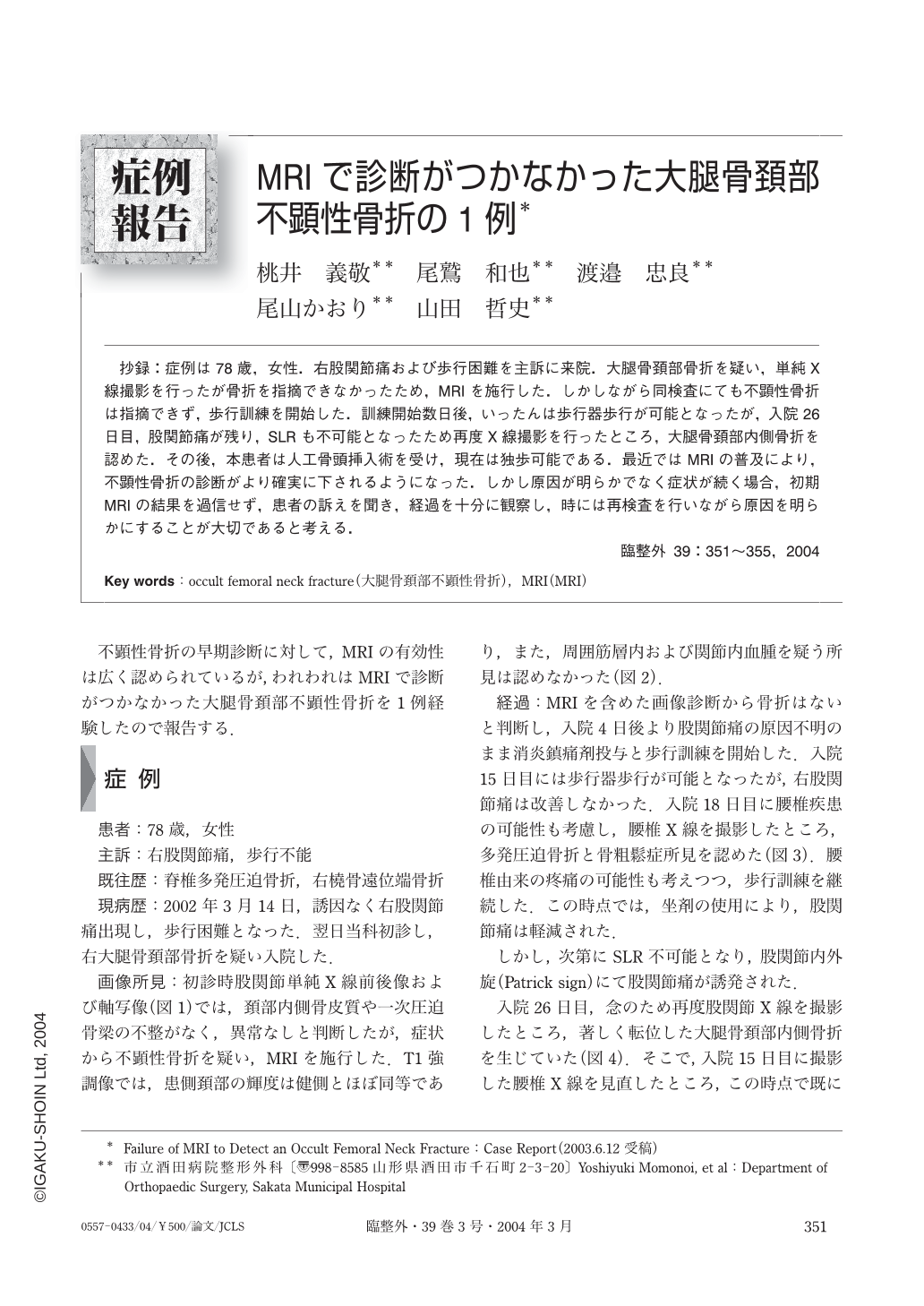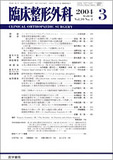Japanese
English
- 有料閲覧
- Abstract 文献概要
- 1ページ目 Look Inside
抄録:症例は78歳,女性.右股関節痛および歩行困難を主訴に来院.大腿骨頚部骨折を疑い,単純X線撮影を行ったが骨折を指摘できなかったため,MRIを施行した.しかしながら同検査にても不顕性骨折は指摘できず,歩行訓練を開始した.訓練開始数日後,いったんは歩行器歩行が可能となったが,入院26日目,股関節痛が残り,SLRも不可能となったため再度X線撮影を行ったところ,大腿骨頚部内側骨折を認めた.その後,本患者は人工骨頭挿入術を受け,現在は独歩可能である.最近ではMRIの普及により,不顕性骨折の診断がより確実に下されるようになった.しかし原因が明らかでなく症状が続く場合,初期MRIの結果を過信せず,患者の訴えを聞き,経過を十分に観察し,時には再検査を行いながら原因を明らかにすることが大切であると考える.
[Case] A 78-year-old woman came to our hospital complaining of right hip pain and trouble walking. Femoral neck fracture was suspected, but simple X-rays showed no evidennce of a fracture, and MRI, failed to detect any evidence of an occult fracture. Walking exercise was started, and although walking with a walker was achieved on the 26th day of hospitalization the hip joint pain remained, and SLR became impossible again. X rays at the time revealed a femoral neck fracture (medial type), and after prosthetic replacement, the patient became able to walk unassisted.
[Consideration] More occult fractures are now being detected because of the increasingly wide spread use of MRI. However, we think it important to identify the cause and not overestimate the results of the first MRI, but listen to the patient's complaints, carefully observe the patient's progress, and occasionally repeat the MRI examination when the condition persists.

Copyright © 2004, Igaku-Shoin Ltd. All rights reserved.


